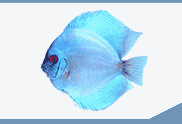

 |
||||||||||||
 |
||||||||||||
| Ammonia 1 | ||||||
| Page 2 of 3 | Pages: 1 . 2 . 3 | |||||
Ammonia Testing Everyone involved in aquaculture should invest in a water quality test kit. A good water quality management program will result in fewer fish disease problems, better growth and less use of chemical treatments. The cost of a water quality test kit will pay for itself many times over, both in numbers of fish saved, and increased production. Most commercial ammonia test kits measure the Total Ammonia Nitrogen (TAN). As mentioned before, it is the fraction of the TAN which is in the unionized ammonia (UIA) form which is toxic. This fraction can be determined from the TAN, if you also test the temperature and pH of the water. At high temperatures and high pH, there is more UIA. Therefore, a good ammonia test kit would include a TAN test, a pH test, and a thermometer. When Should Ammonia Be Tested? Ammonia should be tested every 10 to 14 days in ponds, and at least once a week in tanks. If the tanks are using a common biofilter (i.e. a recirculating system), you won't need to check every tank individually. Records should be kept for all tests, and whenever ammonia is found, the frequency of testing should be increased until the problem is corrected. Whenever fish are sick, test the water quality. Ammonia is responsible for more unexplained losses in aquaculture than any other water quality parameter. As mentioned, it is colorless and odorless, so the only way to know if it is present is to test for it. Fish submitted to a diagnostic laboratory are tested for diseases (bacteria, parasites, fungi or viruses) only. It is the producers responsibility to test the water quality, which can easily be the underlying problem. Interpreting the Ammonia Test In healthy ponds and tanks, ammonia levels should always be ZERO. Presence of ammonia is an indication that something in the system is out of balance. Therefore, ANY ammonia in a pond or tank should alert the producer to start corrective measures. However, it is only the unionized ammonia (UIA) which is toxic to fish. This toxicity begins as low as 0.05 mg/l, so the result of the TAN test needs to be further tested to find the actual concentration of UIA. To do this, the temperature and pH need to be measured. Once the pH and temperature are known, one can determine the fraction of UIA present from Table 1 . Find the temperature on the top, and the pH on the left. The number taken from the table is multiplied by the TAN to give the UIA in mg/l (ppm). This calculation is summarized in Figure 2 , and an example is given in Figure 3 . Anytime that the UIA is higher than 0.05 mg/l, the fish are being damaged. As the concentration rises above 0.05 mg/l it causes more and more damage, and at 2.0 mg/l fish will die. Again, ANY ammonia is indicative of a problem in the system, and corrective measures should be taken by the producer. Management of an Ammonia Problem Since the major source of ammonia is fish feed, the first thing to do when ammonia is present is to reduce or eliminate feeding. Fish are not likely to eat during periods of ammonia stress and the uneaten feed will only make the situation worse. Overfeeding is a major cause of ammonia problems, and stopping the feeding will allow the natural nitrogen cycle to "catch up" with the nutrient load. If at all possible, a 25% to 50% water change will help to remove some of the ammonia. This is only feasible in small ponds or tanks, so don't try to solve an ammonia problem in a large pond by this method. In ponds, phosphate fertilizer may help to relieve high TAN levels over a period of days by stimulating plant growth which helps remove ammonia from the system. Use a 0-20-0 fertilizer at a rate of 40 pounds per acre. This may not help fast enough in an acute ammonia crisis. If phosphate is not limited in the pond, this method will not be effective at all. In tanks without a biofilter, the producer should consider incorporating one. Summary Ammonia is a colorless, odorless substance which can accumulate in aquaculture systems and cause direct mortalities, a decrease in production, and may be the underlying cause of many diseases. The only way to detect its presence is by testing for it, and a fish farmer should not only invest in a water quality test kit, but learn to use it on a regular basis. Commercial test kits only measure the Total Ammonia Nitrogen (TAN). When this test is positive, producers can determine the fraction of toxic unionized ammonia (UIA) if the pH and temperature are also measured. This information is found in Table 1 , and an example calculation is found in Figure 3 . When ammonia is present, the system should not be fed until the problem is corrected. In small systems a water change will help, and in large ponds a 0-20-0 fertilizer may help. By testing for ammonia on a regular basis, most ammonia problems can be minimized, since corrective measures can be taken before fish start to die. Once fish have started to die, it is difficult to correct an ammonia problem without losing more fish. more ... |
 |
|||||
| About Us :: Message Board :: Chat | |||||
| Library :: Photo Gallery :: Links & Resources :: Breeders & Sponsors :: Merchandise | |||||
| Website designed by: EthanCote.com | © 2001-2004, SimplyDiscus.com. All Rights Reserved. | ||||